Kurt Gänzl
Kurt of Gerolstein Blog
6 June, 2019
The Queen of Offenbach’s Bouffes? Oh, yes, I hear the unenlightened nod. ‘Hortense Schneider. We’ve all heard of her’. I: ‘And of whom else have you heard?’ ‘Well, err, nobody, really, but…’. I (forcibly): ‘There are no buts. And you are wrong’. Deflation of the unenlightened. That’s what happens when history gets ‘potted’. Offenbach = the Théâtre de Bouffes-Parisiens. Right. Offenbach = Schneider. Right. Ergo: Schneider = the Bouffes. Wrong.
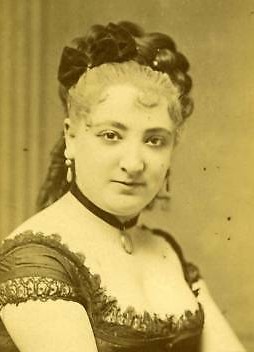
Offenbach’s early star performer Lise Tautin. (Photo: Archive Kurt Gänzl)
The period of Schneider’s heyday came after Offenbach had moved the centre of his activities from his earliest, innovative little theatres to the larger stage of the Théâtre des Variétés. But, before that, he had launched a horde of multicolored opérettes, including his first full length triumph, Orphée aux enfers, to worldwide fame, at the Bouffes where, alongside such stalwart actress-singers as Mdlles Dalmont, Mareschal, Macé-[Montrouge], Chabert et al, one prima donna assoluta reigned supreme as the uncontested ‘reine des Bouffes-Parisiens’ and ‘the personification of the Bouffes’ of the 1850s. The original Eurydice, the original Catarina Cornaro, the original Gracioso, Mademoiselle Lise Tautin. Here is the biography of the lady which the Wiener Salonblatt called ‘Die erste Operettensängerin von Paris, die beste Eurydice Offenbach’s’ in 1872.
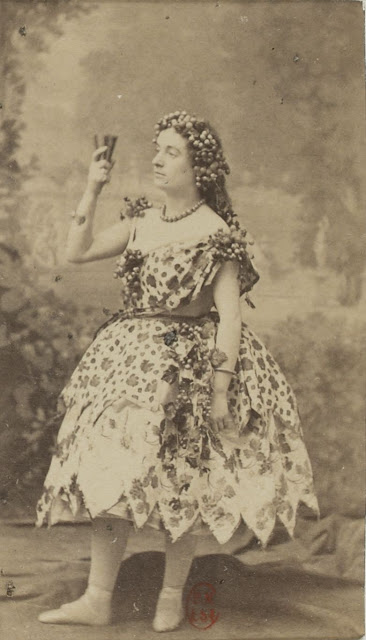
Lise Tautin as Eurydice , the role she created in “Orphée aux enfers.” (Photo: Archive Kurt Gänzl)
TAUTIN, Lise [VAISSIÈRE, Louise Émilie Victorine] (b Yvetot, 31 January 1834; d Bologna, 12 May 1874)
Born into a theatrical family – great-niece of the popular melodrama actor, Jean-Baptiste dit Tautin ‘of the Ambigu, the Gaîté and the Boulevard du Temple’ (1770-1841, ‘all the lungpower of a Neapolitan diver’), and – in spite of what the chroniquers say – a legitimate daughter of the artist and actor, Jacques Adolphe Vaissière dit Tautin (b Paris, 24 September 1804; d unknown) and his wife, needlewoman Victorine Marcotte — Lise Tautin, apparently, made her first stage appearances at the Galeries Saint-Hubert in Brussels, in the year 1850. She went, from there, to the Brussels Théâtre du Vaudeville (La Jeunesse de Louis XIV), and to the Cirque, where she can be spotted playing in a piece called La Chine à Bruxelles (21 March 1854), featuring a troupe of Chinese acrobats. And a dwarf.

The Grand Théâtre, Lyon. (Photo: Archive Kurt Gänzl)
Between September 1854 and July 1857, she played three seasons as deuxième, and then première, Dugazon at the Grand Théâtre de Lyon. Among the roles and pieces in which she appeared were Ekimona then Prascovia in the highly successful Lyonnaise production of L’Étoile du Nord, Lady Allcash in Fra Diavolo, Isabelle in Bonsoir, M Pantalon, Le Domino noir, Le Philtre, Ines in La Favorita, Célestine in Le Bouffe et le tailleur, Mlle Isidore d’Orbe in Le Sourd, a triumphant and cheered Oscar in Gustavus III, Jemmy in Guillaume Tell, Berthe de Simiane in Les Mousquetaires de la Reine, Urbain in Les Huguenots, Betly in Le Châlet, Ne touchez pas à la reine, and the title-role in Clapisson’s newly successful La Fanchonette. When she appeared in the féerie La Fille de l’Air, the press gasped to see this ‘chanteuse du grand opéra’ leading the amazon showgirls of the ballet. When she appeared with M.Offenbach’s visiting Bouffes-Parisiens company, playing in Ba-ta-clan, with Pradeau and Le Violoneux with Darcier, she won herself an immediate engagement to join the company on their return to the metropolis.

Sheet music cover for Offenbach’s “Ba-Ta-Clan.”
She made her début in Paris, at the Théâtre des Bouffes-Parisiens, as Aspasie in Offenbach’s Une demoiselle en loterie (1857, ‘Écoutez cette chanson là’) and was promptly acclaimed by the Figaro ‘the best acquisition the Bouffes has ever made’ and ‘la [Marie] Cabel of the Bouffes’. ‘L’événement capitale de la soirée’. ‘Elle a captivé la salle entière’… ‘Mlle Tautin sera, aux Bouffes, une étoile de première grandeur’ quoth Le Menéstral. And he was right.
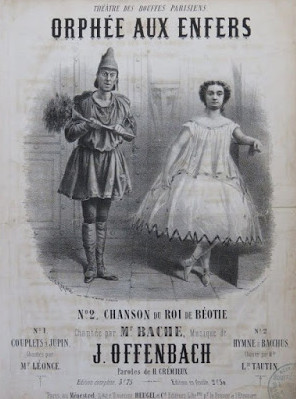
Lise Tautin as Eurydice in “Orphée aux enfers” together with Hans Styx, on a sheet music cover. (Photo: Archive Kurt Gänzl)
She spent virtually all of the remainder of her twenty-year career and, indeed, her life playing under the aegis and/or in the works of Jacques Offenbach. She created the rôles of Fanchette in the original production of his Le Mariage aux lanternes (1857), Minette, the cat-lass, in La Chatte metamorphosée en femme(1858), the kitchen-lad, Croûte-au-pot in Mesdames de la Halle (1858, ‘un ravissant petit marmiton qui chante comme un rossignol’), Rosita in Un mari à la porte (1859), a quadruple role as Les Bouffes-Parisiens et al in Le Carnaval des revues (1860), and she found substantial and enduring fame as the original Eurydice of Orphée aux enfers (1858). One book claims that her dazzling performance of the heroine’s famous Bacchanale gave birth to a new verb ‘tautiner’: ‘imiter la choréographie incendiaire de Mlle Tautin dans Orphée aux enfers’, ‘mettre le feu aux poudres par un cancan éléctrique’, ‘lancer la jambe en l’air avec audace, comme pour donner un coup de pied au ciel’. For Mdlle Tautin was a veritable triple threat – a seriously good voice, a delightful personality topped by delicious acting skill, and the dance talents and athleticism of a Rigolboche. And both public and critics adored her.

Sheet music cover for “Le pont des soupirs.” (Photo: Archive Kurt Gänzl)
Mlle Tautin created three other major Offenbach rôles after that of Eurydice: the outstanding five-part travesty rôle of Gracioso etc in the original two-act version of Geneviève de Brabant (‘Le coeur perdu’), the dramatically beset Catarina Cornaro of Le Pont des soupirs (1861 ‘incomparable dans sa scène de folie’) and the vocally florid Ernestine, who pretends to be Henriette Sontag, in the one-act Monsieur Choufleuri restera chez lui le … (1861, interpolating Offenbach’s ‘Chanson de Barkouf’). She also played roles, created by her colleagues, in such pieces as Vent du soir, Le Chanson de Fortunio (Valentin), Les Bavards, Lischen et Fritzchen and Ba-ta-clan, both at the Bouffes and on their tours, in repertoire.
When Offenbach presented pieces from the pens of other composers, she appeared as Adelaide in Jonas’s Le petits prodiges (1857, ‘Turlututu, le chapeau pointu’), as Monsieur de Luxeuil in Gabrielli’s Le Petit cousin, Beaumesnil in Mme de Grandval’s opérette Le Sou de Lise, Doucette in Varney’s Le Polka des Sabots, or Saint-Ildefonse in Delibes’ Les Eaux d’Ems, pieces which made up the spectacles-coupés of the theatre’s early programmes.
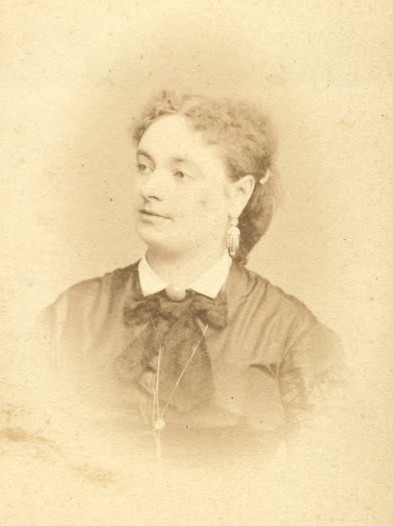
A formal portrait of Lise Tautin. (Photo: Archive Kurt Gänzl)
In 1858, she visited Berlin’s Kroll’s Theater with the Bouffes-Parisiens troupe, in 1860 it was Brussels, then Vienna’s Theater am Franz-Josef-Kai, Berlin’s Friedrich-Wilhelmstädtisches Theater and Nemzeti Szinház in Budapest in the summer of 1861, then, in 1862, she moved on to join the company at the Variétés (La Boîte au Lait, the revue Les mille et un songes, Les Bibelots du diable (Toby), L’Amour qué qu’est qu’ça, Le Bouchon de carafe, Marguerite in Faust et Patrie, Gimblette in Les Farces Dramatiques), and appeared briefly at the Châtelet, as the Princess Grudindoie in La Lampe d’Aladin. She returned ‘home’ to the Bouffes, thereafter – ‘le retour de Mlle Tautin a été fêté avec joie, comme celui de l’enfant prodigue’ – and, subsequently, created there a further Offenbach rôle in Les Bergers (1865, La Sincère) as well as playing in such revivals as Nicolo’s Les Rendez- vous bourgeois. In 1868, again at the Variétés, she succeeded Hortense Schneider and Elise Garaît in the title-rôles of reprises of La Grande-Duchesse and La Belle Hélène, and starred as the re-made Catarina Cornaro in the extended, four-act version of Le Pont des soupirs, and in revue (Paris Tohu-bohu) before, in 1869, she again returned to the Bouffes to play Césarine in the first revival of Lecocq’s Fleur de thé.
She visited Russia and northern Europe for Johann Decker-Schenk (October 1870) with ‘the repertoire of Offenbach’, voyaged to South America (I have yet to find evidence of this!), and, in 1873, she appeared again on the London stage (24 April), which she had previously visited with the Bouffes troupe, for a fortnight in a French plays season (Hervé’s Les Folies Dramatiques).

Lise Tautin dressed as a Bacchante in “Orphée aux enfers,” on a sheet music cover. (Photo: Archive Kurt Gänzl)
And, throughout, she went from strength to strength. When she reprised her Eurydice at the Bouffes in 1865, the press cried ‘[elle] s’est montrée une véritable Ugalde, que dis-je, une Malibran!’. A few years earlier she had been pronounced the equal of the prime travesty player, Dejazet. Now, other folk were compared to her. And only one artist – her successor (some said ‘imitator’) in the Offenbachiade – Mlle Schneider, was allowed to have equaled her.
Lise Tautin died in Bologna, Italy, of the smallpox, in 1874, apparently whilst returning home from an engagement in Constantinople. The papers insisted she was thirty-six. She had, actually, just passed forty. The American press reported that she had been singing in Cairo and died in Boulogne-sur -mer. But who has ever believed American newspapers?
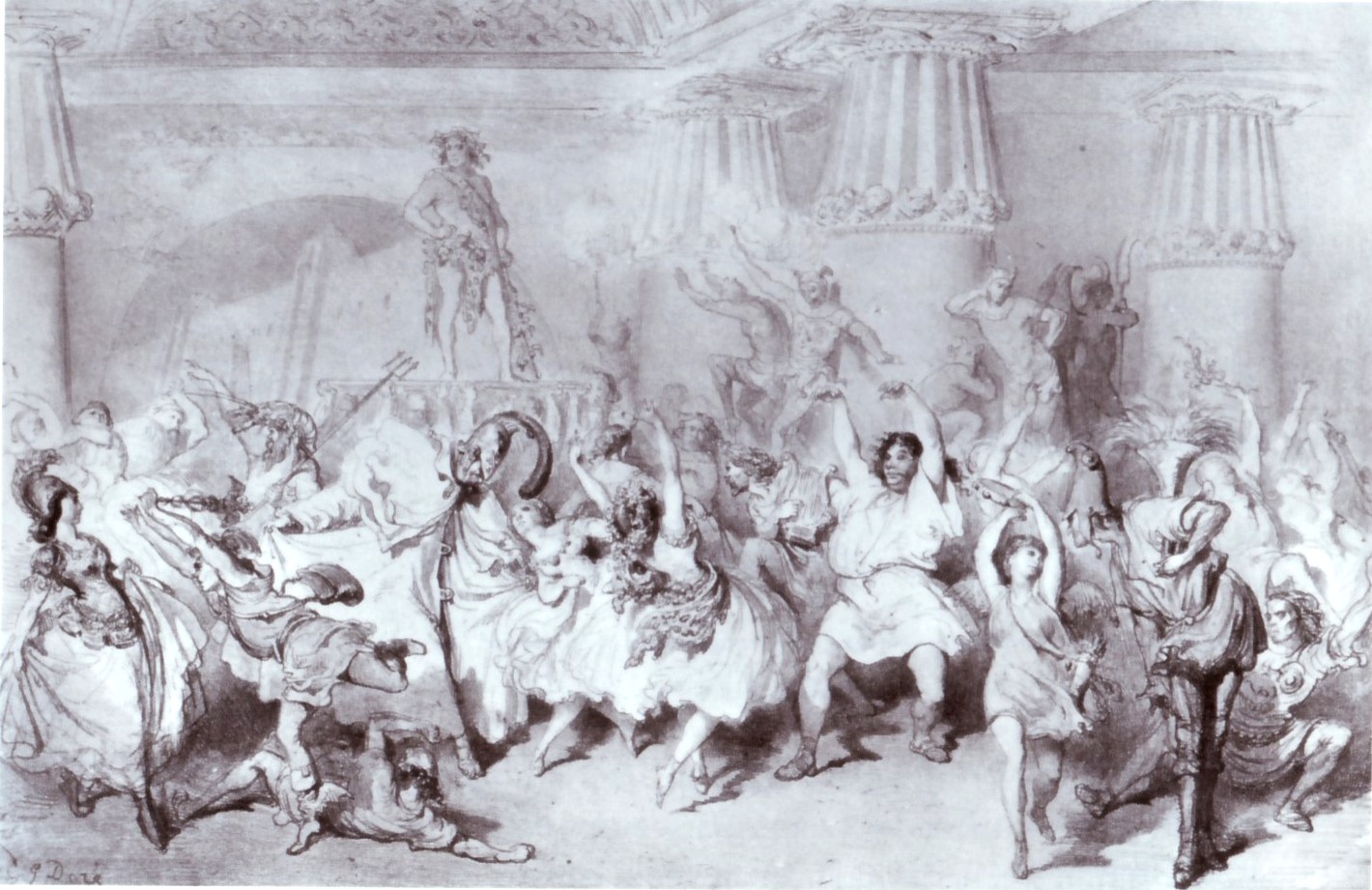
Gustave Doré’s vision of the „Galop infernal“, as seen 1858 in Paris.
Her father, denominated ‘Tautin père’, alongside whom she played from her earliest days, was also, from 1858, a member of the Bouffes-Parisiens company, alongside his daughter, creating small rôles in, aming many others, Orphée aux enfers (Cerbère, cut after two weeks!), Le Tabellion in Delibes’s L’ Omelette à la Follembuche), in Geneviève de Brabant (Un Savant), Les Vivandières de la grande armée (Ramponneau), Le Carnaval des revues and Le Pont des soupirs (Gibetto).
The name of Lise Tautin is sometimes coupled, I feel unreasonably, with that of her more buzzwordy successor, Mdlle Schneider, and she is thus described as one of the theatrical courtesans of the second empire.

“The Dressing Room of Hortense Schneider,” 1873. Painting by Edmond Morin.
[In his Offenbach biography of 2000, Jean-Claude Yon states on page 407 that ‘dans le volumineux register des dames galantes de la prefecture de police’ the name of Lise Tautin pops up, together with other ‘galant ladies’ such as Blanche d’Antigny, Thérésa, Hortense Schneider, Céline Montaland et al. We, as editors at the Operetta Research Center, checked with Mr. Yon to confirm that the actual term used by the French police was ‘dames galantes,’ he replied that indeed it was, or alternatively ‘femmes galantes.’ The suggestion that these terms might be translated as prostitutes and/or courtesans was dismissed by Mr. Yon as ‘très pertinente.’ You might want to make up your own mind why the Parisian police force would register ‘dames/femmes galantes’ if they were not prostitutes. If you wish to look the paper work up yourself, the source listed by Mr. Yon is this: ‘Archives de la prefecture de police, register coté BB1. Ce register a été constitué au début des années 1870.’ – Comment added to the article of Kurt Gänzl by the Operetta Research Center.]
It appears, however, although she is allegedly named in the police reports of the time as a ‘femme galante’ that this is an error. Her private life hardly ever hit the contemporary papers (although her address 8 rue des Martyrs seems to have been well-known) and one reminiscer, describing her, marvelled that a girl who, on the stage, poured forth such joyous and radiant fun and buoyant sex-appeal was, in fact, off-stage, a quiet and unassuming person. Her ‘boyfriends’, it is related, were not at all of the bejewelled and money classes, but ordinary lads to whom she was devoted.
Most of the snippety biographies of Mlle Tautin sprawled around the internet are descended for the one, fairly accurate, French source, and all repeat the same copied facts and ‘facts’. But I have found one scholarly website that sorts out tidily the genealogy concerned, and separates Lise from her aunt Lise (also an actress and Mme Cor). It appears that our Lise, eternally unmarried, did, however, have a daughter who had a daughter surnamed Tautin-Vaissière …
But otherwise, really, this outstanding artist has to go down as the, or the most important of the, founding mothers of the opéra-bouffe.

Article on Mons Tautin. the elder. (Photo: Archive Kurt Gänzl)
PS: Here is an article on Mons Tautin the elder (he had interchangeable christian names) which I append here merely to indicate the degree of his popularity and historical importance.
To read the original article, click here.

Hello folks… this is a work in progress, and I have made further progress since blogging this … and will doubtless make more … latest version is on my kurtofgerolstein blog. Now I’m into these other ladies .. fascinating! PS Jean-Claude Yon is definitely THE Offenbach authority … I just tag along in the coulisses!